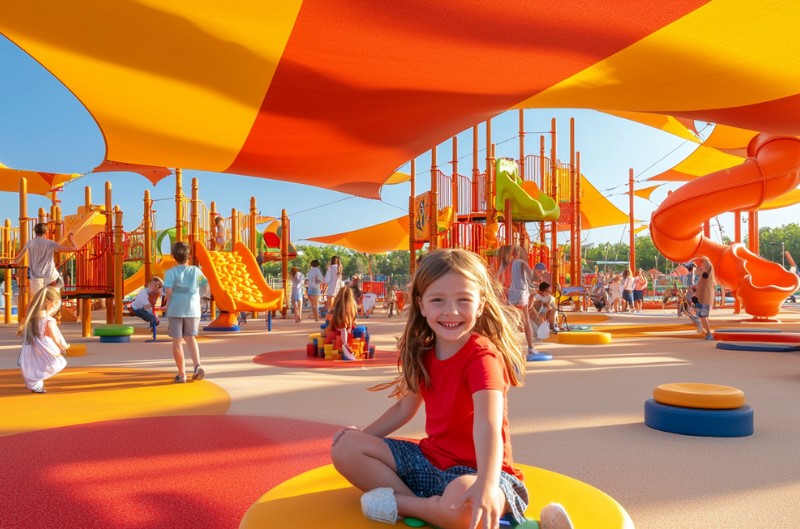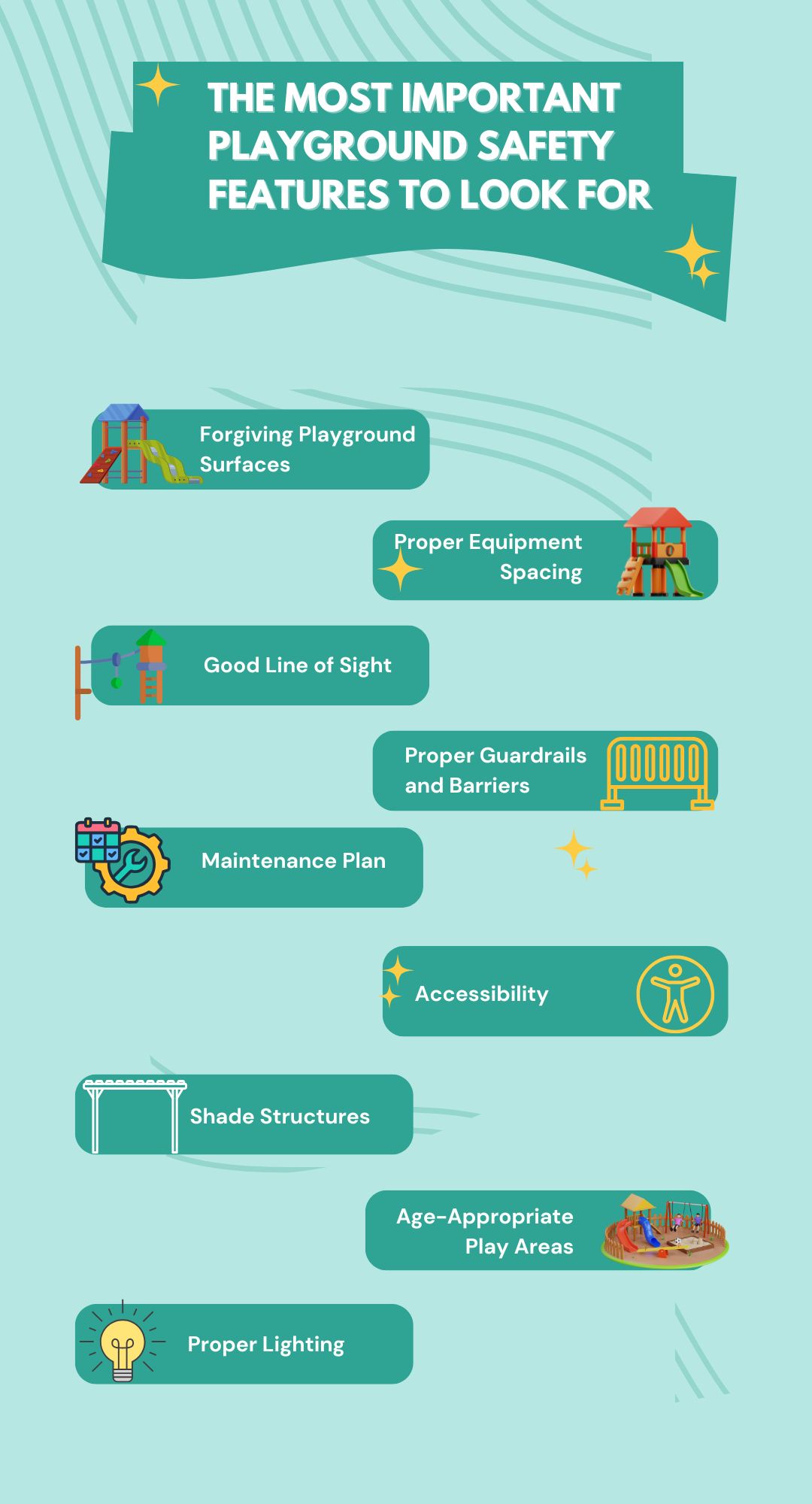
The Most Important Playground Safety Features to Look For
Author: Austin Stanfel
Playgrounds are vibrant spaces where children can explore, learn, and develop essential social and physical skills. However, these areas can pose significant risks if poorly designed and maintained. Each year, over 200,000 children in the United States are treated for playground-related injuries in emergency rooms, highlighting the need for robust safety measures. Ensuring playground safety involves careful design, regular maintenance, and vigilant supervision. Here are the most critical safety features to look for in a playground:
1. Forgiving Playground Surfaces
One of the most crucial safety features is the surfacing used around playground equipment. Hard surfaces like concrete, asphalt, and gravel are hazardous because they can cause severe injuries if a child falls onto them. Instead, playgrounds should use materials that provide adequate shock absorption, such as:
-
- Engineered Wood Fiber: A popular choice due to its cost-effectiveness and ability to absorb impact.
- Recycled Loose Fill Rubber: Offers good shock absorption and is environmentally friendly.
- Poured-in-Place Rubber: Provides a smooth, continuous surface ideal for high-traffic areas.
- Recycled Bonded Rubber: Similar to poured-in-place rubber, but comes in tile form for easier installation.
- Synthetic Turf: Can mimic grass while providing a safer surface for falls.
The U.S. Consumer Product Safety Commission (CPSC) recommends that surfaces have at least 12 inches of material like wood chips, mulch, sand, pea gravel, or safety-tested rubber mats. For swings, the surfacing should extend twice the height of the suspending bar in front and back.
2. Proper Equipment Spacing
Adequate spacing between playground equipment is essential to prevent collisions and overcrowding. Equipment taller than 30 inches should be spaced at least 9 feet apart to ensure children have enough room to play safely without running into each other. Swings, merry-go-rounds, and see-saws with moving parts should be placed in separate areas to minimize the risk of accidents.
3. Good Line of Sight
Ensuring parents and caregivers can easily supervise children is vital for playground safety. A good line of sight allows adults to monitor their children’s activities effectively. This can be achieved by strategically placing benches and shade structures around the playground’s perimeter, providing a clear view of the entire area.
4. Proper Guardrails and Barriers
Guardrails and barriers are critical for preventing falls from elevated structures. For preschool children, guardrails are required on structures over 20 inches high, while barriers are necessary for structures over 30 inches. For elementary-age children, guardrails are needed on structures taller than 30 inches, and barriers are required for structures over 48 inches. It is also essential to ensure guardrail openings are less than 3.5 inches or more than 9 inches to prevent entrapment.
5. Maintenance Plan
Regular maintenance is crucial for maintaining playground safety. A comprehensive maintenance plan should include regular inspections to identify and repair any hazards, such as broken equipment, sharp edges, or tripping hazards. This proactive approach helps prevent accidents by addressing potential dangers before they become serious.
6. Accessibility
Playgrounds should be designed to be accessible to all children, including those with disabilities. This includes ensuring that pathways are wide enough for wheelchairs and that play structures are adaptable for children of different abilities. The Americans with Disabilities Act (ADA) emphasizes the importance of accessible play areas, making them a critical component of modern playground design.
7. Shade Structures
Providing shade is essential for protecting children from excessive sun exposure, which can lead to sunburns, premature aging, and even skin cancer. Shade structures like hip, sail, umbrella, and cantilever shades can offer protection while maintaining the playground’s aesthetic appeal.
8. Age-Appropriate Play Areas
Separating play areas by age ensures that children play safely with peers of similar abilities. This helps prevent accidents caused by older children accidentally injuring younger ones. Play structures should be designed with distinct features suitable for different age groups, such as infants, toddlers, and adolescents.
9. Proper Lighting
Adequate lighting is essential for playground safety, especially during evening hours. Proper lighting helps parents monitor their children from a distance and deters potential criminal activity. Options include LED lamps, streetlights, and glow-in-the-dark lights along pathways.
Conclusion
Playgrounds are meant to be places of joy and learning. Still, they require careful planning and maintenance to ensure safety. By incorporating these essential safety features, communities can create environments where children can thrive without undue risk. Regular inspections, proper supervision, and ongoing maintenance are key to preventing injuries and fostering a safe and enjoyable playground experience.


